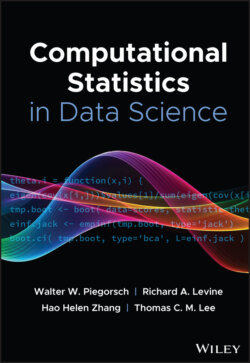Читать книгу Computational Statistics in Data Science - Группа авторов - Страница 74
2.3 Gradient Descent
ОглавлениеThe form of the function will usually be fairly complex, so attempting to find via direct differentiation will not be feasible. Instead, we use gradient descent to minimize the error function.
Gradient descent is a general optimization algorithm that can be used to find the minimizer of any given function. We pick an arbitrary starting point, and then at each time point, we take a small step in the direction of the greatest decrease, which is given by the gradient. The idea is that if we repeatedly do this, we will eventually arrive at a minimum. The algorithm guarantees a local minimum, but not necessarily a global one [4]; see Algorithm 1.
Gradient descent is often very slow in machine learning applications, as finding the true gradient of the error criterion usually involves iterating through the entire dataset. Since we need to calculate the gradient at each time step of the algorithm, this leads to having to iterate through the entire dataset a very large number of times. To speed up the process, we instead use a variation on gradient descent known as stochastic gradient descent. Stochastic gradient descent involves approximating the gradient at each time step with the gradient at a single observation, which significantly speeds up the process [5]; see Algorithm 2.
